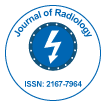Notre groupe organise plus de 3 000 séries de conférences Événements chaque année aux États-Unis, en Europe et en Europe. Asie avec le soutien de 1 000 autres Sociétés scientifiques et publie plus de 700 Open Access Revues qui contiennent plus de 50 000 personnalités éminentes, des scientifiques réputés en tant que membres du comité de rédaction.
Les revues en libre accès gagnent plus de lecteurs et de citations
700 revues et 15 000 000 de lecteurs Chaque revue attire plus de 25 000 lecteurs
Indexé dans
- Index Copernic
- Google Scholar
- Ouvrir la porte J
- JournalSeek de génamique
- RechercheBible
- Bibliothèque de revues électroniques
- Recherche de référence
- Université Hamdard
- EBSCO AZ
- OCLC-WorldCat
- Catalogue en ligne SWB
- Bibliothèque virtuelle de biologie (vifabio)
- Publons
- Fondation genevoise pour l'enseignement et la recherche médicale
- ICMJE
Liens utiles
Revues en libre accès
Partager cette page
Abstrait
Ultrashort TE (UTE) Imaging of the Knee Cartilage at 3T
Song Gao, Shanglian Bao, Christine B Chung, Graeme M Bydder and Jiang Du
While MR imaging has emerged as the imaging method of choice for diagnosis of cartilage disease, the deep radial and calcified layers of cartilage are difficult to image with conventional MRI because of their short T2 relaxation times. The imaging of cartilage injury and osteoarthritis (OA) has therefore focused on the superficial layers of cartilage. We describe herein the implementation of Ultrashort Echo Time (UTE) pulse sequences with Echo Times (TEs) as low as 8 μs on a clinical 3T scanner. Various adaptations were made to the regular UTE acquisition in order to optimize image contrast between the deep layers and superficial layers of cartilage. These modifications included multiple gradient echo UTE acquisition with and without fat saturation, and multiple spin echo UTE acquisition. The efficacy of these techniques in depicting the targeted tissues was demonstrated through imaging of cadaveric samples and healthy volunteers. Excellent depiction of these different regions was obtained, enhanced particularly with fat suppression and later echo subtraction methods. Quantitative measurements showed that while UTE Free Induction Decay (FID) acquisition provided the highest signal-to-noise ratio, both fat suppression and later echo subtraction enhanced the contrast between the deep and superficial layers of cartilage.
Revues par sujet
- Agriculture et Aquaculture
- Biochimie
- Chimie
- Food & Nutrition
- Génétique et biologie moléculaire
- Géologie et sciences de la Terre
- Immunologie et microbiologie
- Ingénierie
- La science des matériaux
- Le physique
- Science générale
- Sciences cliniques
- Sciences environnementales
- Sciences médicales
- Sciences pharmaceutiques
- Sciences sociales et politiques
- Sciences vétérinaires
- Soins infirmiers et soins de santé
Revues cliniques et médicales
- Allaitement
- Anesthésiologie
- Biologie moléculaire
- Cardiologie
- Chirurgie
- Dentisterie
- Dermatologie
- Diabète et endocrinologie
- Gastro-entérologie
- Immunologie
- La génétique
- Maladies infectieuses
- Médecine
- Microbiologie
- Neurologie
- Oncologie
- Ophtalmologie
- Pédiatrie
- Recherche clinique
- Soins de santé
- Toxicologie

 English
English  Spanish
Spanish  Chinese
Chinese  Russian
Russian  German
German  Japanese
Japanese  Portuguese
Portuguese  Hindi
Hindi